Cancer treatments work in many ways.
The illustrations below show how different kinds of treatments attack cancer cells.
Detailed information on each of the treatment types is in the Treatment section.
Chemotherapy
Examples of this kind of cancer treatment include: paclitaxel (Taxol®,Onxal™) cisplatin (Platinol®), carboplatin (Paraplatin®) and doxorubicin (Adriamycin®).
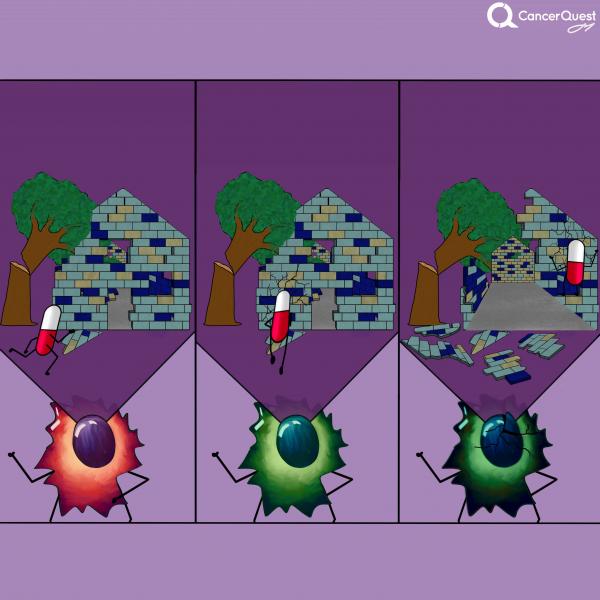
Cancer cells are already 'broken' in many ways. Chemotherapy causes more damage and causes the cancer cells to die.
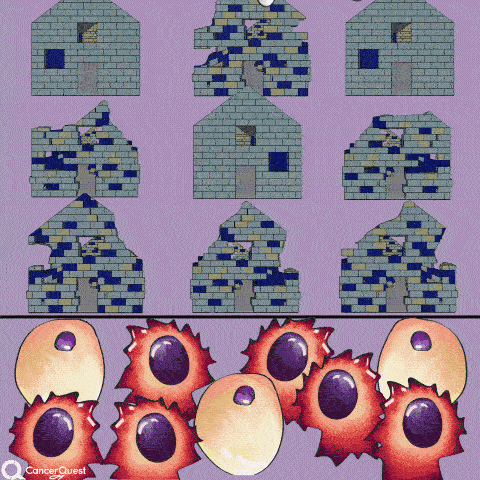
Chemotherapy attacks both normal and cancer cells, and some normal cells are killed. More cancer cells die because they are already damaged and don't repair things properly.
Radiation
Radiation uses high energy waves or particles released from radioactive chemicals to kill cancer cells. There are two main types of radiation, proton therapy and photon therapy. They work in similar ways.
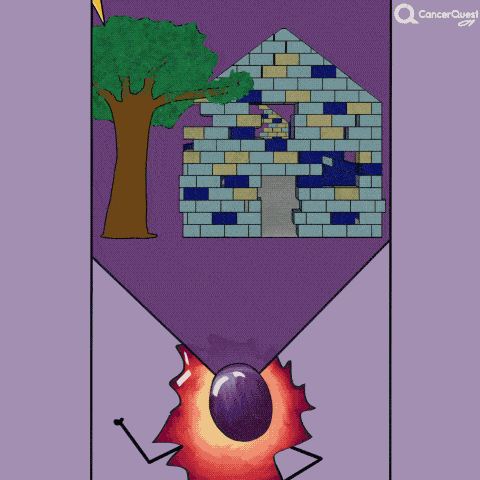
Radiation causes DNA damage and kills cancer cells. Like chemotherapy, some normal cells are killed by radiation.
Kinase Inhibitors
Examples of this kind of cancer treatment include: erlotinib (Tarceva®) imatinib (Gleevec®, Glivec®) pazopanib (Votrient®), sorafenib (Nexavar®) and sunitinib (Sutent®).

Kinases are important proteins (enzymes) that join phosphates (green) to proteins. In normal cells, kinases are active but regulated.

In cancer, key enzymes (kinases) become overactive - causing cells to reproduce or survive when they shouldn't.

Kinase inhibitors are drugs that stick to, and block, enzymes (kinases) in cancer cells. This prevents important signals, stops reproduction and can kill the cells.
Antibody Treatments
These treatments all use immune proteins called antibodies to target cancer cells. Examples of this kind of cancer treatment include: trastuzumab (Herceptin®), rituximab (Rituxan®), tositumomab (Bexxar®) and alemtuzumab (Campath®). Any generic treatment name ending in -mab is an antibody.

Antibodies bind to targets on cancer cells and cause them to die. In addition to simply jamming cancer cell signals, the treatments can bring poison to the cancer cells, cause the immune system to recognize the cancer or deliver radiation to the cancer cells.
Immunotherapy (Biological Response Modifiers)
The result of these drugs is a increased immune response against the cancer. There are several different kinds of immunotherapy treatments.
1. Cytokines
Cytokines are natural proteins that boost the immune response against cancer. Examples include interleukin 2 (IL2, Aldesleukin®, Prokleukin®) and alpha-interferon (α-IFN, Intron®, Sylatron™)

Immune boosting proteins are used to enhance the immune response against cancer cells.
2. Immune Checkpoint Inhibitors
Note that these drugs are antibodies, but they work in a slightly different way than those described above in 'Antibody Treatments'. Instead of attacking the cancer cells, these treatments work to stimulate the immune response against cancer cells. Examples of checkpoint inhibitors include pembrolizumab (Keytruda®), nivolumab (Opdivo®) and atezolizumab (Tecentriq®).
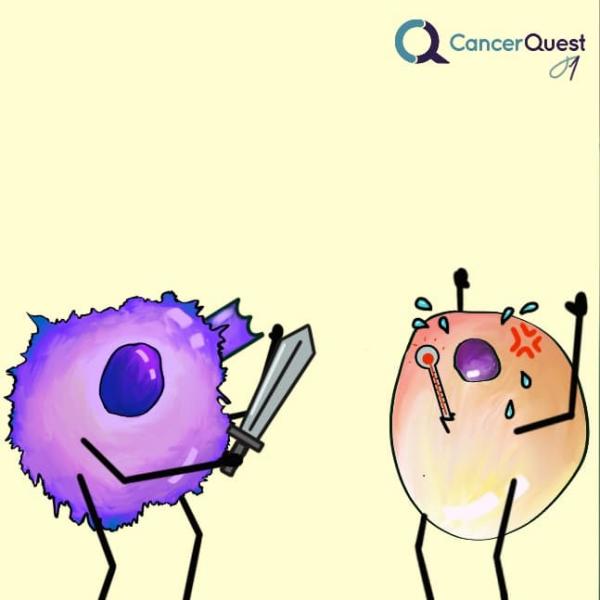
The immune system can recognize 'sick' (i.e. virally infected) cells and cancer cells.
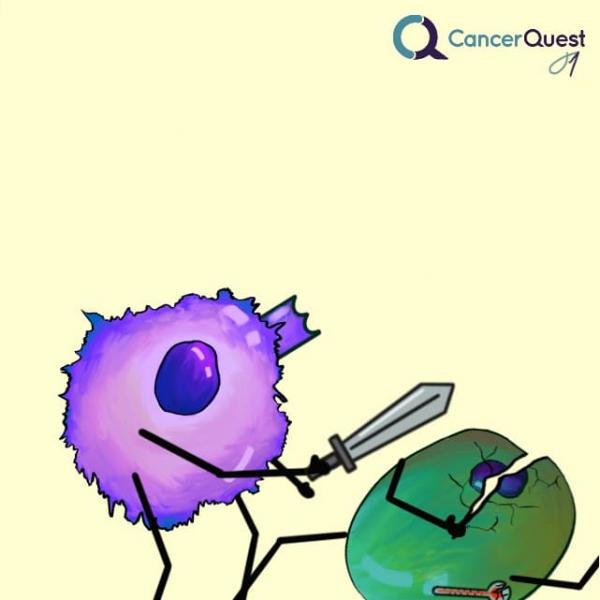
The infected or damaged cells are killed by immune cells.
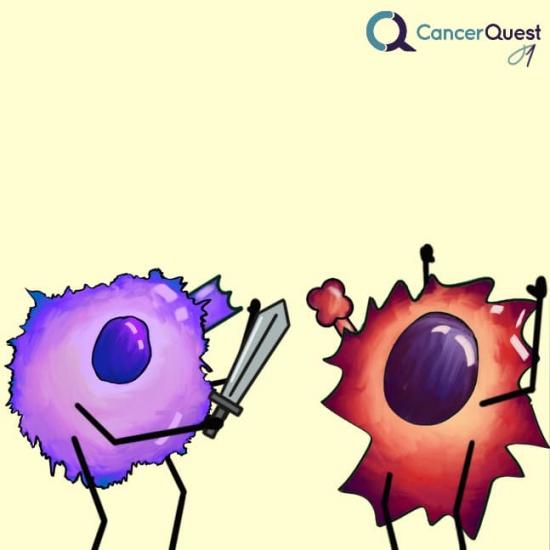
Some cancer cells can be recognized, but not killed.
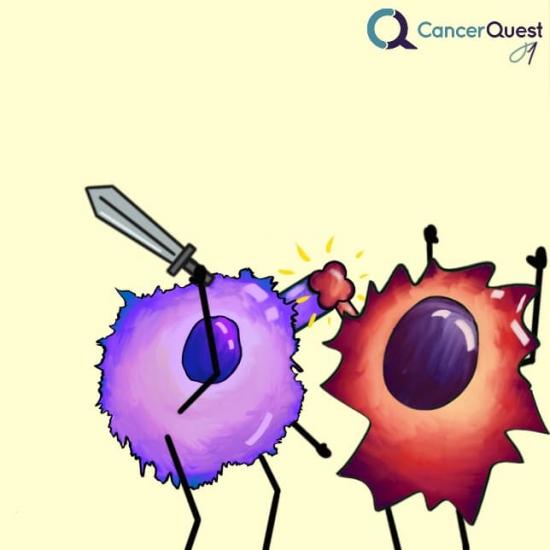
The cancer cells make proteins that bind to the immune cells...
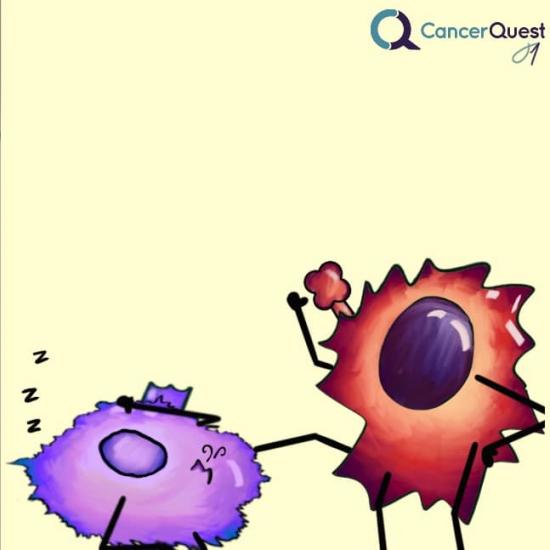
...causing the immune cells to become inactive (like putting them to sleep).

The checkpoint immunotherapy treatments prevent the cells from binding together in a way that would shut down the immune cells. The cancer cells can then be recognized and killed.
Hormone Blocking Treatments (Hormone Antagonists)
These treatments block signals that cause cancer cells to reproduce and/or survive better. Hormones are made in one call and taken up by other cells.
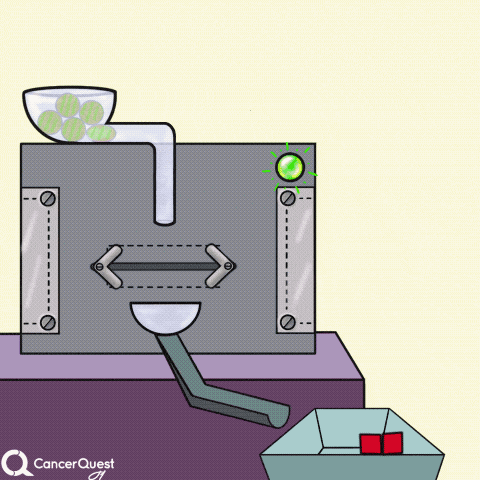
Hormones (red diamonds) are made by protein machines (enzymes) in cells. They can stick to or enter cancer cells, helping them live and reproduce.
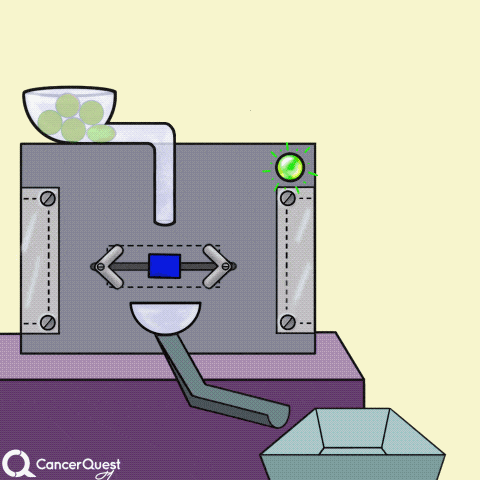
Some cancer drugs (blue rectangle) prevent hormones from being made, 'starving' the cancer cells of the signals.
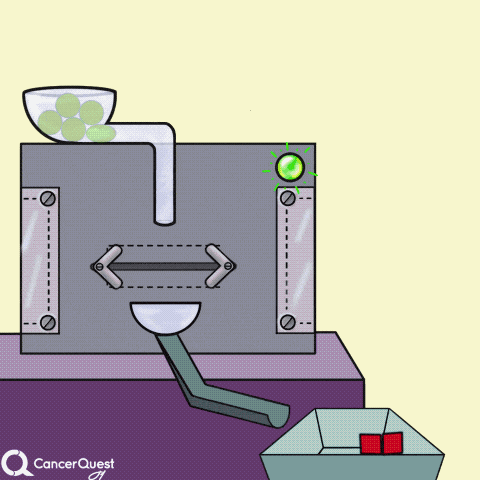
Some hormone-blocking drugs (blue triangle) prevent hormones (red diamonds) from sticking to cancer cells. They can also prevent the hormones from doing their jobs if they do stick.
Hematopoietic Stem Cell Transplantation (HSCT)
These treatments include bone marrow transplantation (BMT) and peripheral blood stem cell transplantation (PBSCT). In both of these, healthy cells are used to replace cancer cells living in the bone marrow of patients. The donated cells can come from the donor's bone marrow or arm.
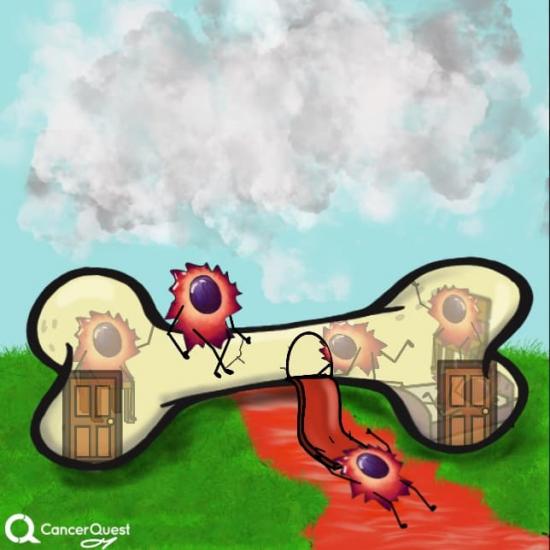
In hematopoietic stem cell transplantation (HSCT), cancer cells living in the bone marrow are killed. They are then replaced with healthy cells from the patient themself or a donor.
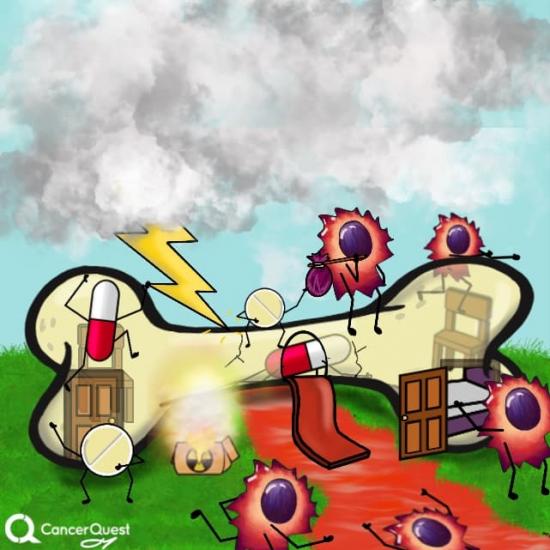
Often a combination of drugs and radiation is used to kill the cancer cells.
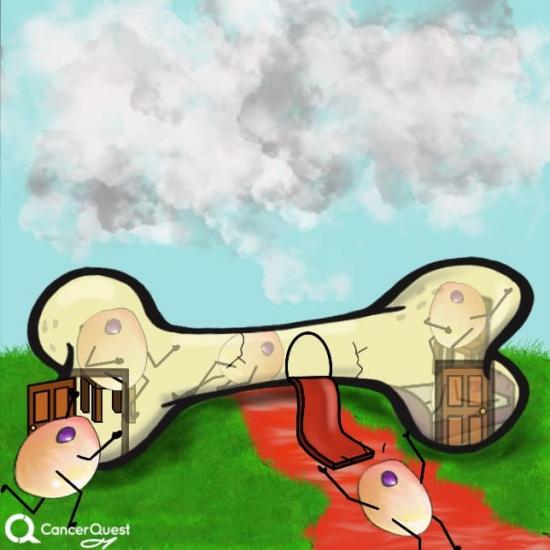
The new cells can move into the bone marrow and healthy cells are released.
Cryotherapy
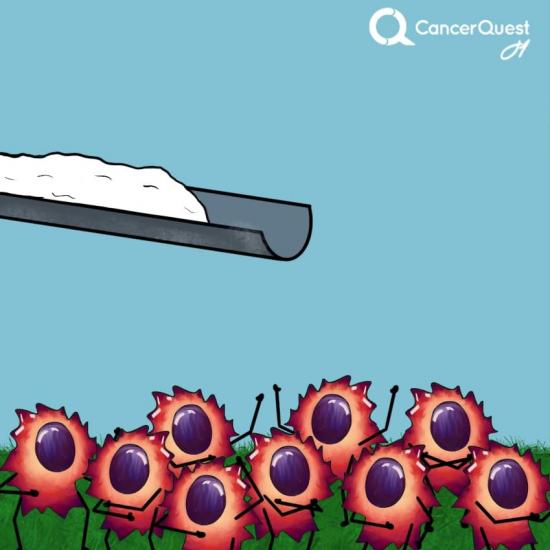
Cryotherapy uses a metal rod filled with extremely cold liquid to freeze cancer cells.
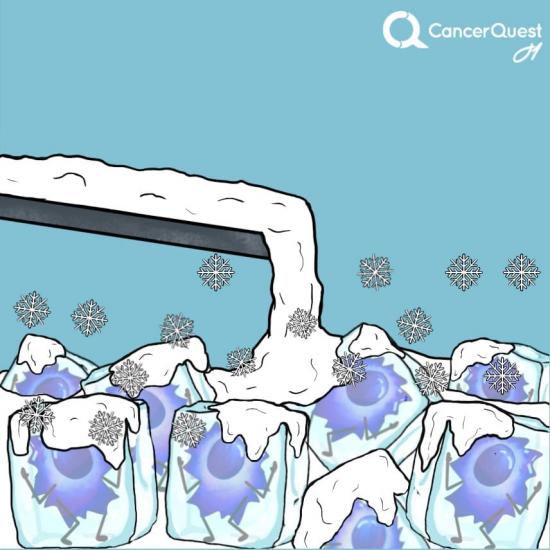
The fluid does not actually enter the tumor. A rod full of cold liquid is held in place long enough to freeze the surrounding area and kill all cells in the area (both cancer and normal).
